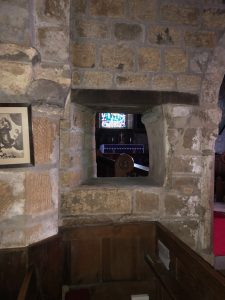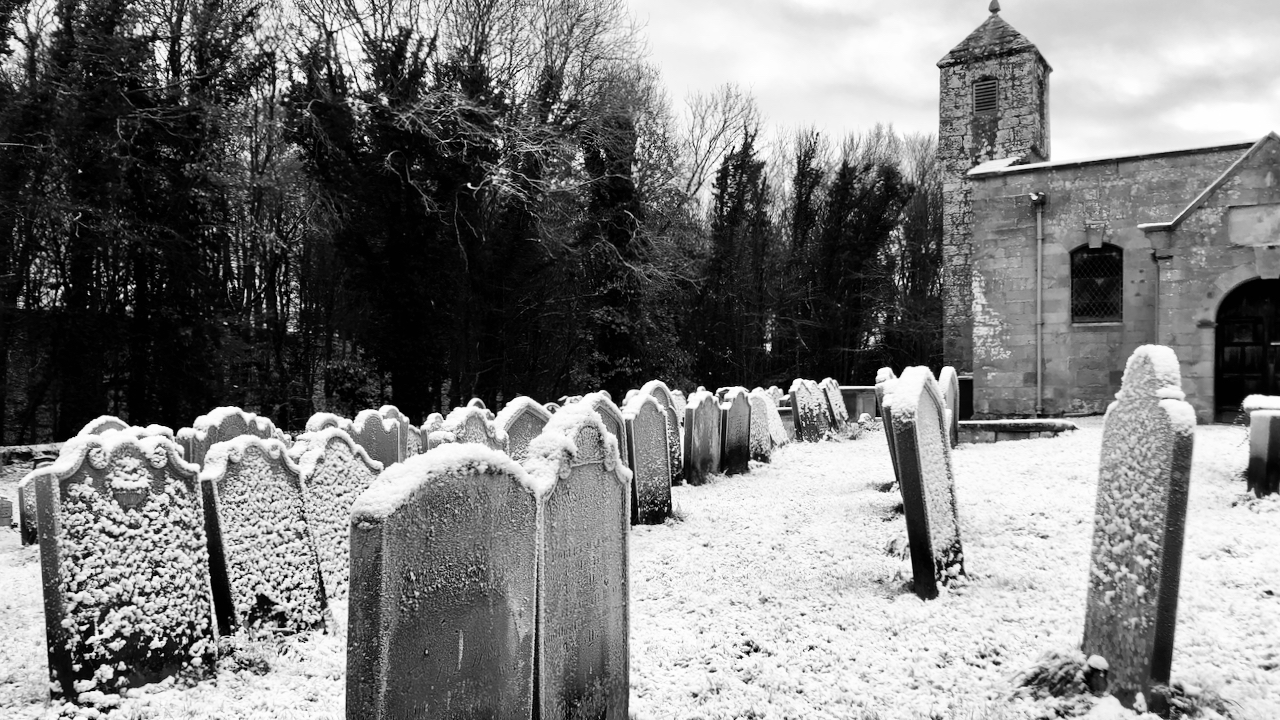Pevsner described St. Andrew’s Church at Ingleby Greenhow as “Low, with a squat little bell-turret. The exterior seems unassumingly Georgian. It was in fact almost entirely rebuilt in 1741.“1Pevsner, Nikolaus. “The Buildings of England – Yorkshire – The North Riding”. Page 201/2. Penguin Books. Reprinted 1985. ISBN 0 14 071009 9.
He goes on to identify various Norman architectual features, a window in the west wall of the bell-turret and some moulding around the priest’s doorway. So there seems to have been some reuse of an older building.

One feature which Pevsner surprisingly didn’t mention was a squint or hagioscope inside the building. I learnt about this from a local information leaflet and had previously stopped by on a bike ride to have a look2‘Ingleby Greenhow Heritage Trail – Kirby, Great Broughton and Ingleby Greenhow Local History Group’. 2022. Kgbighistory.org.uk <https://kgbighistory.org.uk/projects/heritage-trails/ingleby-greenhow-heritage-trail/> [accessed 15 December 2022]. But this was during Covid and the church was locked up.
A hagioscope is a window, usually with splayed jambs, to enable a view of the altar. This may be in an internal wall from a side chapel so that the lord of the manor can view the service but not the common folk in the nave.
Or it may be in an external wall so that lepers for instance can view the service but remain outside.
Inside, the hagioscope wasn’t hard to find, through the chancel arch. I must admit it took a bit of convincing as I had expected an obvious side chapel but that space was occupied by the church organ. So maybe the hagioscope was designed to enable the organist to view the service, or perhaps there originally was a chantry chapel there enclosed by parclose screens.
The information leaflet says there is another hagioscope on the other side of the chancel arch. This would have been hidden by the pulpit.
Pevsner also draws attention to carvings of a “realistic” pig and bear. The pig can be seen in the photo of the hagioscope, top right of the framed print. He maintains these are “impossible” for the 18th-century and the Middle Ages, and suggests they’re mid-19th-century work.
Outside, overnight snow made an interesting view of the churchyards.
- 1Pevsner, Nikolaus. “The Buildings of England – Yorkshire – The North Riding”. Page 201/2. Penguin Books. Reprinted 1985. ISBN 0 14 071009 9.
- 2‘Ingleby Greenhow Heritage Trail – Kirby, Great Broughton and Ingleby Greenhow Local History Group’. 2022. Kgbighistory.org.uk <https://kgbighistory.org.uk/projects/heritage-trails/ingleby-greenhow-heritage-trail/> [accessed 15 December 2022]

Leave a Reply to Fhithich Cancel reply